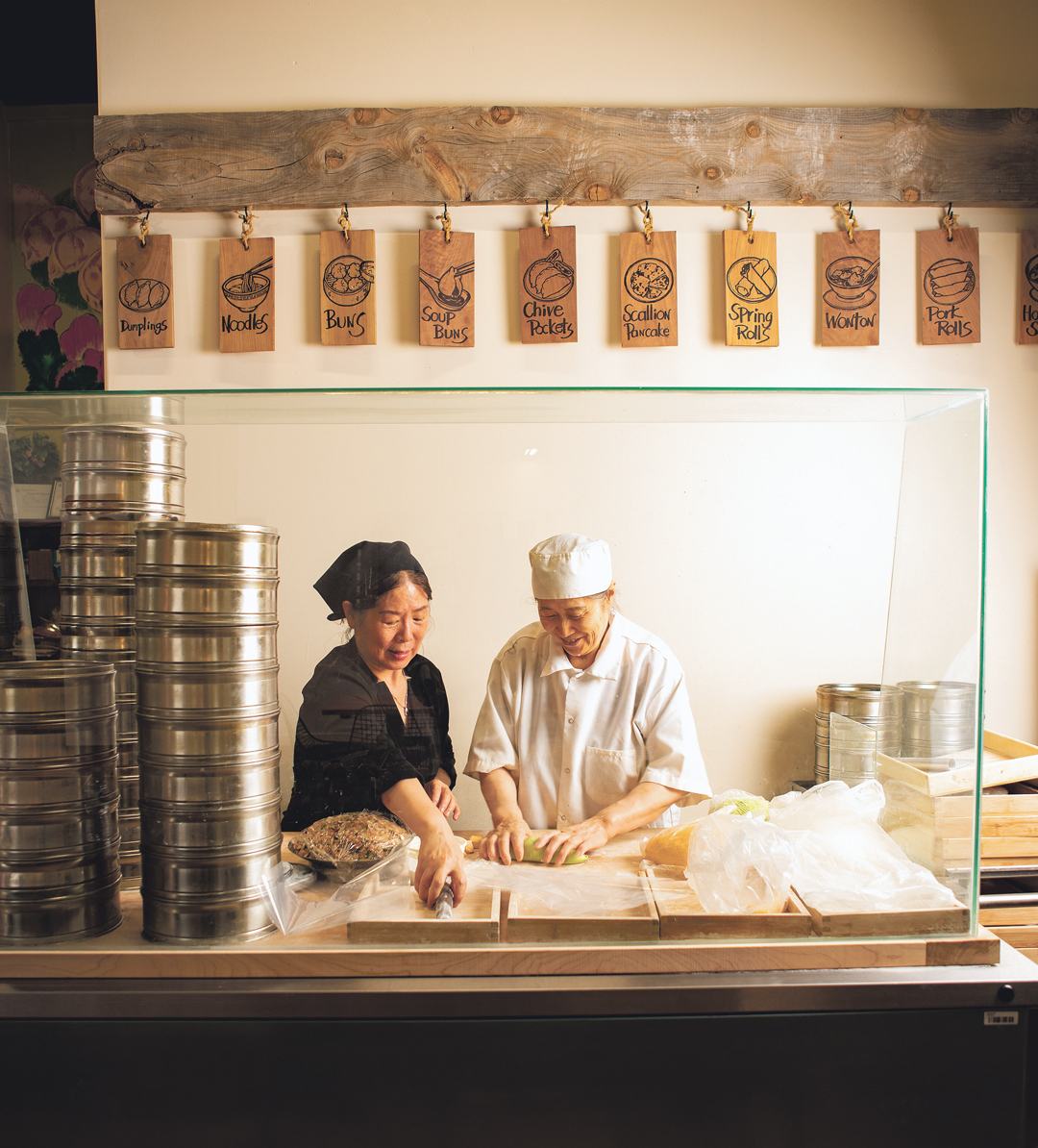HOW SPICY
by Jason Conde
photos by Douglas Merriam

Dan dan noodles are relatively new to me. I didn’t grow up eating them. I’ve never had them as a snack on the streets of Chengdu, where the dish originated, or in Hong Kong, where it evolved into a milder, soupy iteration. My first experience was in 2015 at a noodle house in Brooklyn’s Chinatown. At the time, I didn’t know dan dan noodles had dry and soupy versions, or that some people harbored loyalties for one over the other. I knew that it was a cold February afternoon, and the soup, listed as Noodles with Spicy Meat Sauce, with its fatty broth, crisp ground pork, and springy rice noodles, warmed me up. “Dan dan noodles are very good,” said a middle-aged busser in a red apron wiping down the table beside me. After I finished the noodles and the meat, and all that was left was the reddish-brown broth, I remembered the custom of leaving something on your plate to indicate that enough food was served—but couldn’t remember in what culture that was customary. I was full, but I slurped up the rest of the broth anyway.
When I went back that spring, I asked for dan dan noodles again, and was served a smaller bowl of noodles topped with roasted peanuts, spicy meat, and only a fraction of the broth.
“You said dan dan noodles, right?” the teenage server asked. I thought to clarify, but I’m not picky about food and don’t mind trying something new.
I’m a bowl eater by heart, and I like a little of everything in each bite, so mixing my dry dan dan noodles came naturally. The steam rising from the bowl smelled of sesame. The Sichuan peppercorn chili oil gave the noodles a numbing red hue. The ground pork was cooked down to crisp, umami-rich bits. If I were going off texture alone, I could have fooled myself into thinking I was having spicy spaghetti Bolognese. By then, I was certain that leaving a bite on your plate was a Chinese custom, but again, I ate everything in my bowl, even the slivers of green onion.
As a COVID-era transplant to northern New Mexico, I spent a lot of time on the internet researching restaurants I wanted to visit once it was safe enough to go out again. For months, I read articles and made mental notes of where to get Navajo tacos and green chile burgers. Sometimes I’d search for some of my personal favorites—biscuits and gravy, fried chicken, bún bò Huế. While googling dim sum near me, I found Dumpling Tea in Santa Fe. Its website claimed it was an “Authentic Chinese Restaurant in Santa Fe” and featured an image of soupy dan dan noodles, akin to the first bowl I ate that winter day in Sunset Park.
I perused Dumpling Tea’s Yelp page, looking through more pictures of dan dan noodles and reading the captions. “Amazing,” one caption read. “A lot of heat to this dish,” read another. “Not very authentic,” read a third, “but tasty.”
Some of my friends who have traveled through Chengdu and fancy themselves Sichuan gastronomes have ideas of what constitutes an authentic bowl of dan dan noodles. “Small bowls,” one says. “Ya cai,” insists another, referring to the pickled mustard greens added as a relish. But by far, their marker for authentic dan dan noodles is that they’re served dry—with meat sauce, not broth—and spicy. “It’s not authentic,” I was told, “if you’re asked what spice level you want.”
Dumpling Tea is tucked inside a galleria across from Santa Fe Plaza. On my first visit, the dan dan noodles were sold out, even though it was only an hour or so past noon. A good sign, I reasoned, and consoled myself with a scallion pancake, cucumber salad, and panfried pork dumplings.
On my next visit, there was a fiesta in the plaza. Food vendors sold turkey legs, Navajo tacos, and aguas frescas. More potential consolations.But the dan dan noodles were still available. “How spicy?” I was asked.
Separating the two dining rooms was a wooden prep table enclosed on three sides with plexiglass. While I waited for my soup, I watched owner and chef Fen Wang, who goes by Julie, fill and shape dumplings.
The soup was topped with bright green onion and cilantro, ground pork cooked firm with hints of sesame oil and garlic, roasted soybeans, and a dollop of ya cai. The hand-pulled noodles were soft and chewy. A layer of chili oil and fat laced the surface of the broth and, at the medium spice level I requested, created a layer of sweat on my face that paired nicely with the breeze flowing through the mall.
Between bites, I studied Julie as she shaped one dumpling after another, looking for any indication that she was in some trance that lends itself to the style and uniformity of the dumplings, but I couldn’t tell what I was really looking for. She seemed both focused and distracted, her gaze moving from side to side as if she were listening to two conversations at once while she pulled and pinched dumplings in the palm of her hand. I was full by the time I finished the noodles and the meat. For a minute, I watched flecks of cilantro floating in the broth before I took the bowl in my hands and slurped the rest of it up.

Jason Conde
Jason Condeis a writer and educator. He lives in Las Vegas, New Mexico, with his partner and their daughter.


